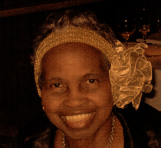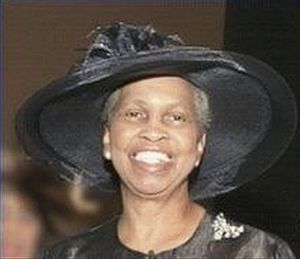Rupert Richardson facts for kids
Quick facts for kids
Rupert Richardson
|
|
|---|---|
 |
|
| Born | January 14, 1930 Navasota, Texas, US
|
| Died | January 24, 2008 (aged 78) Baton Rouge, Louisiana, US
|
| Known for | Civil rights activism |
Rupert Florence Richardson (January 14, 1930 – January 24, 2008) was an amazing African-American leader. She worked hard for civil rights, which are the basic rights and freedoms that all people should have. She was the president of the National Association for the Advancement of Colored People (NAACP) from 1992 to 1995. The NAACP is a very important group that works to make sure all people, especially African Americans, are treated fairly. Rupert Richardson also worked for the government in Louisiana for 30 years.
Contents
Early Life and Education
Rupert Florence Richardson was born on January 14, 1930, in Navasota, Texas. Her parents were Albert S. Richardson and Mary Samuels Richardson. Soon after she was born, her family moved to Lake Charles, Louisiana. She grew up there and went to public schools.
In 1952, Rupert earned a Bachelor of Science degree from Southern University in Baton Rouge, Louisiana. Her mother had also graduated from this university. Ten years later, in 1962, Rupert Richardson earned two master's degrees from McNeese State University. She studied counseling and psychology. Rupert married James A. Clemons Jr. and they had eight children together.
Working for the State
In 1965, Rupert Richardson started working as a counselor for the Louisiana Department of Labor. This department helps people find jobs and supports workers. Nine years later, she moved to the Louisiana Department of Health and Hospitals. Here, she focused on helping people with mental health services. She eventually became a high-ranking official in that department.
After working for the state, Rupert Richardson started her own health clinic called Rupert Richardson and Associates. She also served on several important state boards. These included the Louisiana Gaming Control Board and the Louisiana Commission on Human Rights. She also advised the United States Commission on Civil Rights for Louisiana.
Leading the Fight for Civil Rights
Rupert Richardson joined the NAACP when she was a teenager in the 1940s. She worked to stop lynching, which was a terrible act of violence against African Americans. She also fought against racial segregation, which was when people were kept separate based on their race.
She became the president of the NAACP's Louisiana State Conference for 16 years. She was also a leader on the national level. She served on the NAACP board from 1981 until she passed away. She was the NAACP vice president from 1984 to 1991. Then, she became the president of the NAACP from 1992 to 1995.
As president, Rupert Richardson helped the NAACP focus on new important issues. These included problems with money and health care that affected different groups of people. She also worked on environmental racism, which is when pollution or harmful things are placed more often in areas where minority groups live.
In 1995, there was a problem where the NAACP's executive director, Benjamin Chavis, used the organization's money improperly. Rupert Richardson worked hard to fix the NAACP's reputation after this. She created partnerships with important groups, like the Harvard Business School.
After her time as president ended in 1995, Rupert Richardson was given the special title of president emerita of the NAACP. From 1999 to 2008, she led the organization's Health Committee. She had pushed for this committee to be created. Her focus was on helping minority groups with HIV/AIDS in the United States. Near the end of her life, she continued to fight for civil rights. For example, she spoke up for the Jena Six in 2006 and 2007.
Many people called her the "grand dame" of the NAACP. Julian Bond, another civil rights activist, said that "Rupert Richardson was in many ways the conscience of the NAACP." This means she was like the moral guide for the organization.
Later Life and Legacy
Rupert Richardson passed away on January 24, 2008, in Baton Rouge. Her body was honored at the Old Louisiana State Capitol. After her death, Bobby Jindal, who was the Governor of Louisiana at the time, declared January 31 to be "Rupert F. Richardson Day." This day honored her amazing contributions to civil rights.


